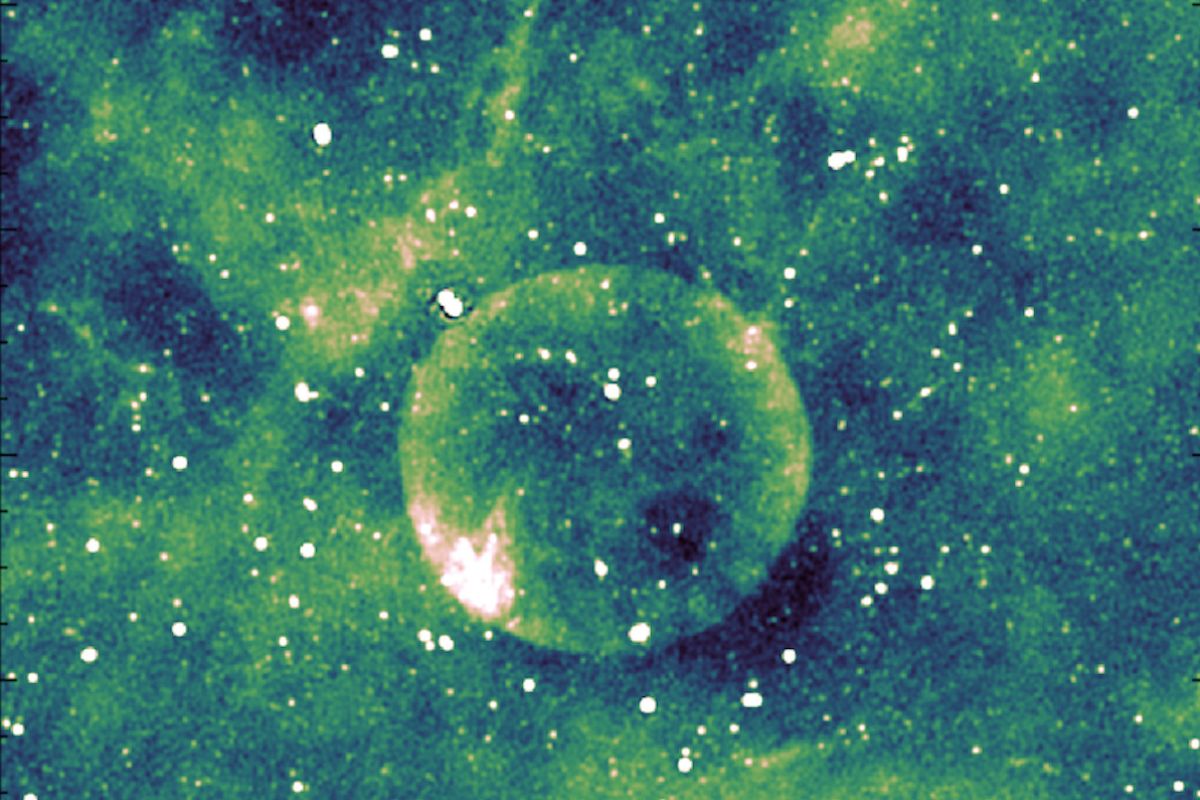The Australian SKA Pathfinder Telescope has made an astonishing discovery: a celestial object exhibiting an almost perfect spherical shape. This finding is unprecedented in the scientific community. The Australian radio telescope ASKAP, which stands for Australian Square Kilometer Array Pathfinder, has unveiled this remarkable object, identified as G305.4-2.2, located within the Milky Way. Its most intriguing characteristic is its near-perfect roundness.
Dubbed Teleios by researchers—a Greek term meaning “perfection”—this massive bubble of plasma is detectable only in the radio spectrum, leaving no signs in visible light, infrared, or X-rays. Unlike typical supernova remnants, which tend to present irregular, frizzy shapes due to the chaotic nature of stellar explosions and their surroundings, Teleios surprises astronomers with its over 95% round shape. This quality makes it the first “perfect radio circle” identified within our galaxy.
However, studying Teleios poses challenges due to its faintness. Scientists are uncertain about its distance from Earth, with estimates ranging from 2,200 to 7,700 light years, and its diameter could be anywhere from 14 to 47 light years. These uncertainties complicate efforts to date the object. As noted in a research report published on May 7, “There are two possible scenarios: either it is a young supernova afterglow (less than 1,000 years old) or an older one (more than 10,000 years old).”
Various theories regarding Teleios’s origin have emerged, with one of the stronger hypotheses suggesting that it might be a result of a “type Ia supernova aftereffect.” In this scenario, an ultra-symmetric explosion of a white dwarf in a sparsely populated space could have resulted in the delicately sculpted sphere. Nevertheless, further research is needed to confirm this theory. The article states, “Unfortunately, all the scenarios examined present challenges, and no definitive type of supernova origin can be established at this stage.”
Moreover, several factors make the nature of Teleios even more perplexing. The object does not emit X-rays, which would typically be expected if it were indeed a supernova remnant. Typically, a massive star’s explosion would leave behind a dense core, such as a neutron star or black hole, neither of which have been detected in this case. Compounding the mystery is the absence of historical records of a supernova in this region of the sky, suggesting that if Teleios is young, its explosion went unnoticed from our vantage point on Earth.
As the scientific community continues to explore this enigmatic object, the soon-to-be-operational Square Kilometre Array, Australia’s new radio telescope, may provide additional insights into the mysteries of space.

